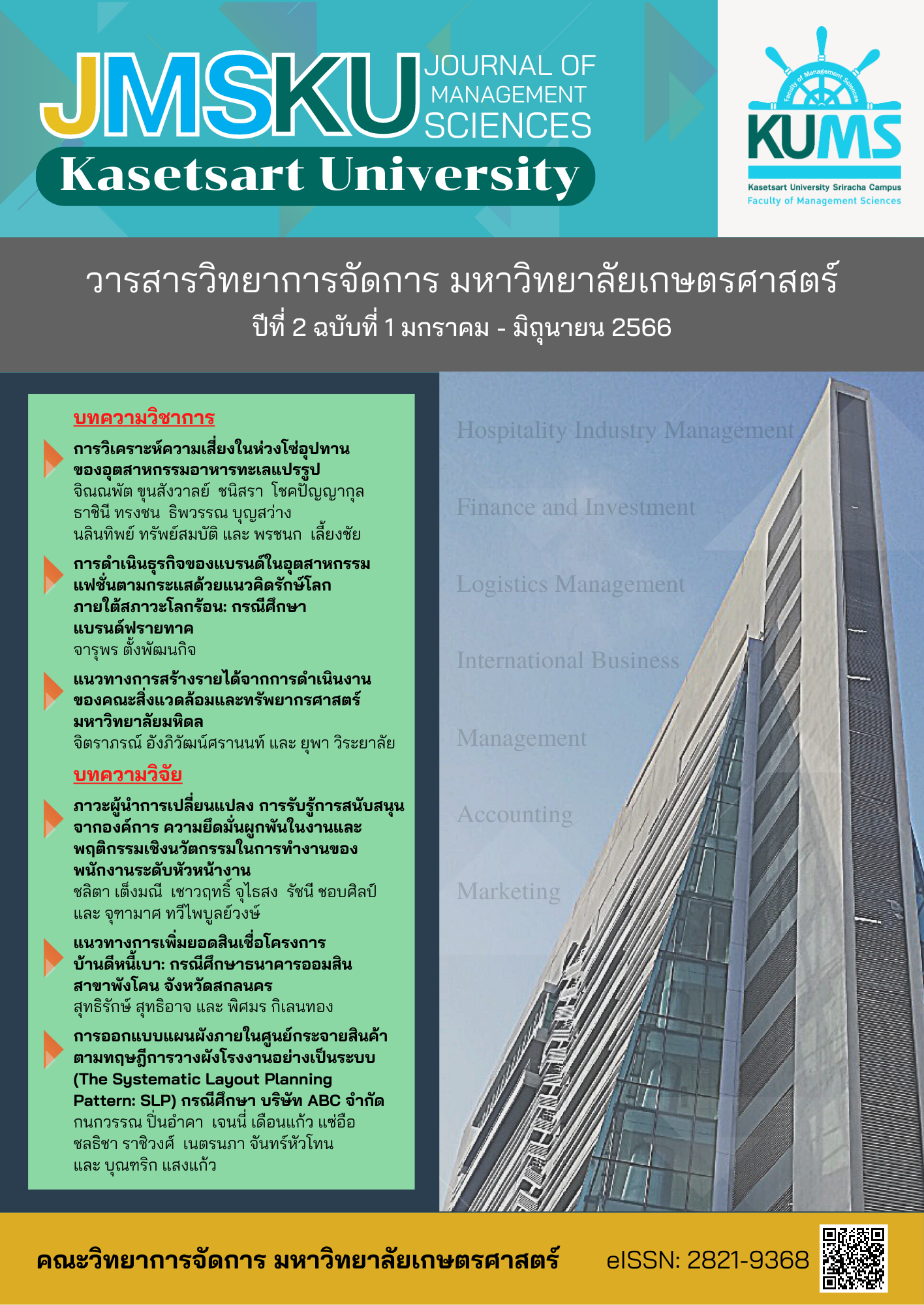การวิเคราะห์ความเสี่ยงในห่วงโซ่อุปทานของอุตสาหกรรมอาหารทะเลแปรรูป
##plugins.themes.bootstrap3.article.main##
บทคัดย่อ
บทความวิชาการฉบับนี้มีวัตถุประสงค์เพื่อชี้ให้เห็นความเสี่ยงและผลกระทบที่อาจเกิดขึ้นในห่วงโซ่อุปทานของอุตสาหกรรมอาหารทะเลแปรรูป โดยนำกรอบแนวคิด COSO Enterprise Risk Management (COSO ERM) มาแบ่งประเภทความเสี่ยงตามวัตถุประสงค์ทั้งหมด 4 ด้าน ได้แก่ ด้านกลยุทธ์ (Strategy), ด้านการดำเนินงาน (Operation), ด้านการรายงาน (Reporting), และด้านการปฏิบัติตามกฎหมายและกฎระเบียบที่เกี่ยวข้อง (Compliance) โดยความเสี่ยงที่ระบุแต่ละด้านมาจากเหตุแห่งความเสี่ยงของรายงานความเสี่ยงโลกประจำปี พ.ศ. 2564 (Global Risks Report 2021) ที่จัดทำขึ้นโดยสภาเศรษฐกิจโลก (World Economic Forum: WEF) สะท้อนให้เห็นว่าโลกกำลังเผชิญกับความเสี่ยงใดที่ส่งผลกระทบต่อสังคม เศรษฐกิจ และภาคอุตสาหกรรม เพื่อชี้ให้เห็นถึงความเสี่ยงในระยะสั้นที่อาจจะเกิดขึ้นภายในองค์กร และรับทราบเกี่ยวกับเหตุการณ์ที่ไม่แน่นอนที่อาจเกิดขึ้นในอุตสาหกรรมอาหารทะเลแปรรูป
จากการศึกษาความเสี่ยงและผลกระทบของอุตสาหกรรมอาหารทะเลแปรรูป พบว่าด้านการดำเนินงาน (Operation) มีจำนวนความเสี่ยงที่ส่งผลกระทบด้านลบมากที่สุด ประกอบด้วย 4 ความเสี่ยงด้วยกัน ได้แก่ ความเสี่ยงจากการขาดแคลนแรงงาน, ความเสี่ยงจากการพึ่งพาเทคโนโลยี ความเสี่ยงจากการขนส่งสินค้าทางทะเล และความเสี่ยงจากความผันผวนของราคาน้ำมัน ด้านกลยุทธ์ (Strategy) พบว่ามีจำนวนความเสี่ยง 3 ความเสี่ยง ได้แก่ ความเสี่ยงจากการจัดหาวัตถุดิบ, ความเสี่ยงจากอัตราแลกเปลี่ยน, ความเสี่ยงจากพฤติกรรมผู้บริโภคที่เปลี่ยนแปลงไป ด้านกฎหมายและกฎระเบียบ (Compliance) มีจำนวนความเสี่ยง 1 ความเสี่ยง ได้แก่ ความเสี่ยงจากการเติบโตของอุตสาหกรรม และด้านการรายงาน (Reporting) เป็นด้านที่ไม่พบความเสี่ยง
